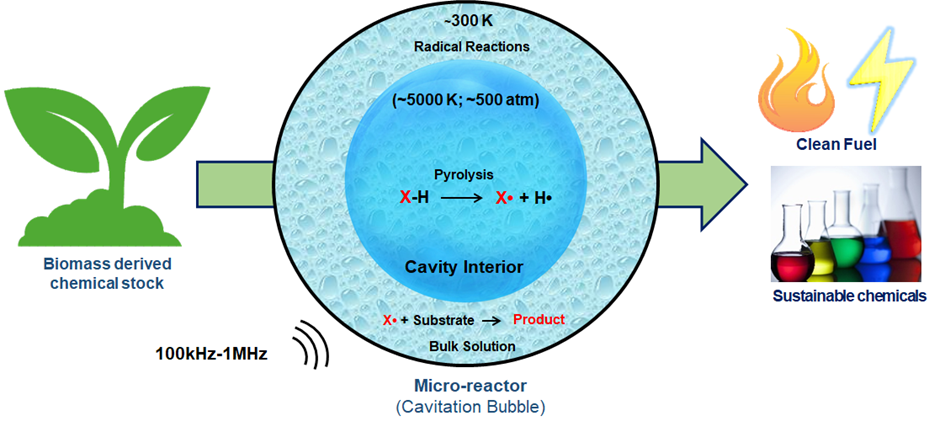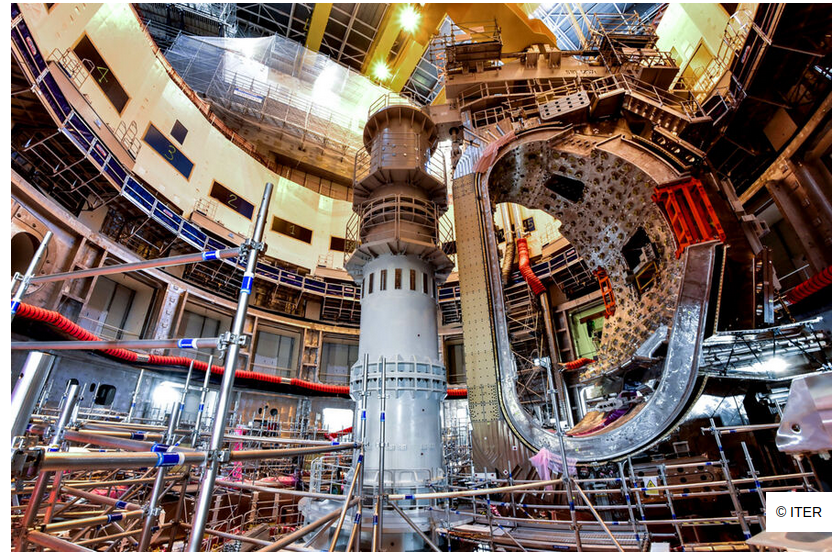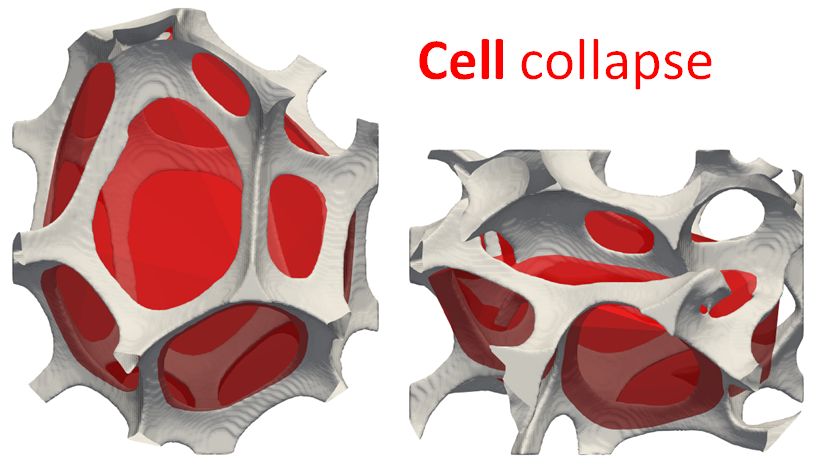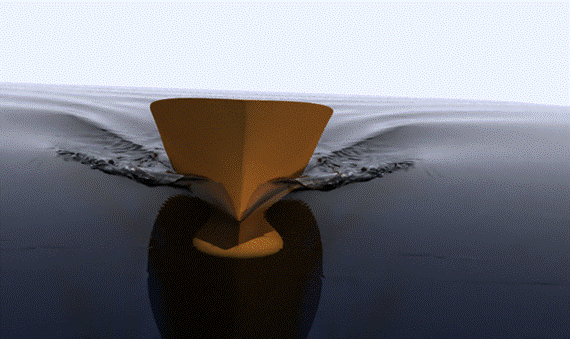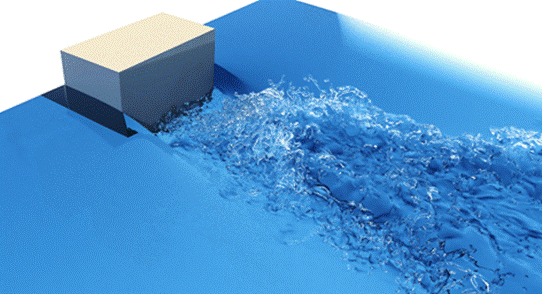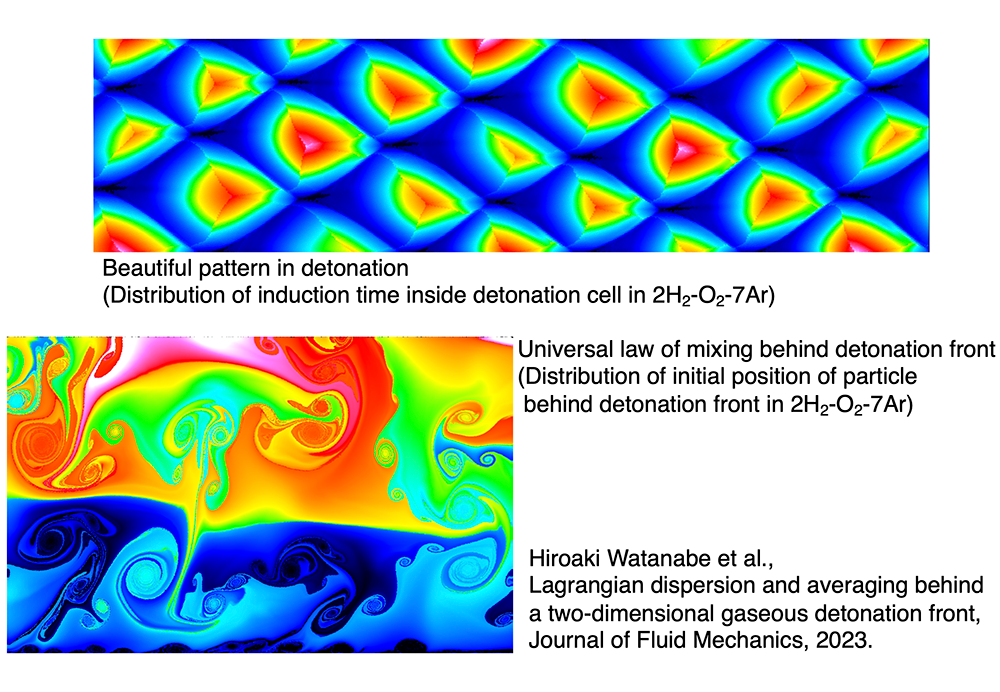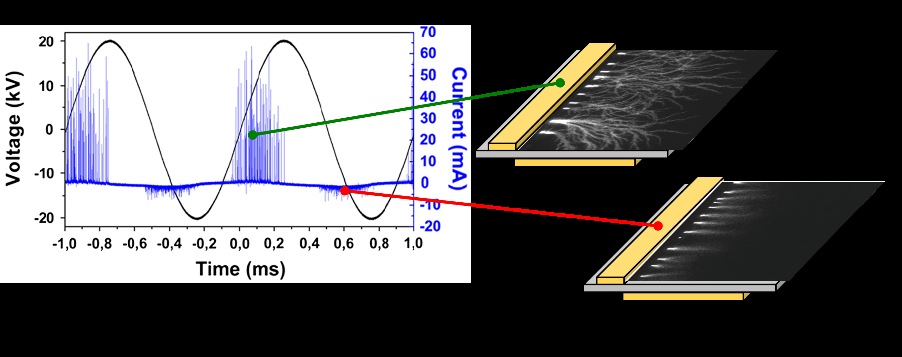The use of unconventional activation techniques, such as low and high frequency ultrasound (US), in combination with heterogeneous catalysts offers a powerful synergistic approach to transform renewable resources to value added chemicals. Taking advantage of the cavitation bubbles generated during ultrasound irradiation which often acts as a micro-reactor and the localized extreme conditions of temperature and pressure, small molecules can be activated to yield highly reactive radicals that can in synergy with catalysis promote the selective conversion bio-based substrates into valuable products which are hitherto difficult to obtained under conventional routes and at mild reaction conditions. Through selected examples, we demonstrate the potential of high frequency ultrasound working in concert with catalysis in promoting the formation of relevant industrially valuable chemicals
Archives : Évènements
Bruit d’écoulement à basse vitesse en conduit : mesure et simulations numériques
L’aéroacoustique en conduit examine la génération, la propagation et la réception du bruit généré par les fluides, en particulier dans le contexte des systèmes de ventilation, de chauffage, de climatisation et d’autres systèmes similaires. Dans de nombreuses situations, la présence d’obstacles (volet, clapet, coude…) dans la conduite rend l’écoulement turbulent. Le bruit d’obstacle occasionné se transmet au réseau aéraulique et peut constituer une gêne sonore.
La prévision ainsi que la mesure des niveaux de bruits engendrés par des écoulements turbulents en conduit est un thème de recherche qui fut initié lors du projet CEVAS (Conception d’Equipement de Ventilation d’Air Silencieux, 2013-2016) portant sur le développement d’outils de simulation et/ou moyens d’essais qui permettent de prendre en considération de manière efficace les aspects bruits en amont de la phase de conception des systèmes de ventilation d’air automobile. Le projet a permis le développement d’une formulation intégrale originale basée sur l’analogie de Ribner. La méthode ne nécessite que la connaissance du champ de pression issu d’une simulation LES incompressible sur les bords du domaine de calcul et permet de s’affranchir d’un calcul volumique coûteux. Les comparaisons de la puissance acoustique rayonnée avec les mesures, via la méthode dite ‘2N-ports’, ainsi que des mesures du champ de vitesse turbulentes au voisinage d’un obstacle inséré dans le conduit montrent de bons accords. Le cas spécifique de deux obstructions identiques séparées par une distance comparable au diamètre hydraulique montre des mécanismes de rétroaction fluide-acoustique de forte intensité. On montre que ces effets ne peuvent être capturés via la simulation numérique qu’en prenant en compte la compressibilité du fluide.
Simulation des plasmas de tokamak : états stationnaires axisymétriques à flot non nul
La détermination classique des équilibres des plasmas de tokamaks repose sur la résolution de l’équation de Grad-Shafranov. On y suppose que le plasma, vu comme un fluide conducteur, a une vitesse nulle. Expérimentalement, il existe de nombreuses observations d’une rotation spontanée dans les tokamaks notamment dans la direction toroïdale. Cette rotation du plasma s’avère avoir des effets très importants sur l’amélioration du confinement et le passage dans le mode H de confinement amélioré. Pour éclaircir ces observations expérimentales, nous nous proposons de déterminer numériquement les états stationnaires axisymétriques des équations non-linéaires de la magnétohydrodynamique visco-résistive obtenues en réintroduisant le terme convectif. Cette étude doit prendre en compte le forçage dû à la présence d’un champ électrique extérieur dans la direction toroïdale servant à créer le courant toroïdal nécessaire dans un tokamak à la création de la composante poloïdale du champ magnétique.
Soutenance de Thèse : Endri LACAJ
Soutenance de Thèse : Abdel-Salem MEDJAHED
Séminaire de l’équipe TriboLub
Deux exposés sont au programme:
- Dr. Manas Ranjan Pattnayak (post-doc fellow at Pprime): « Air lubrication for the environment and sustainable industrial technologies«
- Mr Ibrahim Diallo (doctorant): « Usure et durée de vie des étanchéités : Applications aux joints radiaux segmentés«
Numerical investigations of ship breaking bow waves
Ship bow wave breaking is a common phenomenon during navigation, involving complex multi-scale flow interactions. However, the understanding of this intense free surface flow issue is not sufficiently deep, especially regarding the lack of research on the impact of various aspects, such as scale effects, ship type effects, ship motion effects, ship speed effects, on bow wave breaking. This presentation will firstly introduce the numerical approaches for the prediction of ship breaking bow waves, where the VOF method coupling with RANS approach and Delayed Detached Eddy Simulation (DDES) method will be illustrated in detail. Two different ships, namely benchmark container ship model KCS and navy combatant model DTMB 5415 will be used in the present studies. All the numerical calculations were performed using the in-house CFD solver naoe-FOAM-SJTU, which is developed on the open source platform OpenFOAM. The present numerical approach was validated through measurement data of wave profiles and wake flows obtained from model tests conducted at CSSRC. Grid convergence study was also carried out to find a suitable mesh configuration for the simulation of ship breaking bow waves. The numerical simulations and results discussion will be divided into 4 different categories according to the simulation conditions. First is the study of the speed effects, and the breaking bow waves under different Fr conditions will be analyzed in detail. Then is the motion effect, where different trim angle conditions are considered and significant difference can be observed for the breaking phenomenon. Three different ship scale models, i.e. 1:37.89, 1:52.67 and 1:110, are applied to study the scale effects on ship breaking waves. The ship type effects on ship breaking bow waves will mainly focus on the different characteristics between KCS and DTMB. Flow field results for different conditions, including bow wave profiles, vorticity at various sections, and wake distribution, were presented and analyzed. Through various simulations and comparisons, it is found that trim angle and ship speed have much influence on the breaking phenomenon, and considerable effects of scale are observed on the temporal and spatial variations of the free surface breaking pattern. The findings of this study can serve as valuable data references for the analysis of ship bow wave breaking phenomena.
Numerical Simulation Techniques for Ship Water-Air-Bubble Mixture Flows
Ship water-air-bubble mixture flows represent a complex hydrodynamic phenomenon driven by the intense interaction between marine engineering structures and the surrounding fluid. This phenomenon involves the vigorous penetration and mixing of water and air phases, the entrainment and suction of multiscale bubbles, and the splashing of liquid droplets, all characterized by extensive spatiotemporal scales and influenced by a multitude of factors. It is particularly pronounced in the vicinity of full-scale structures, significantly impacting ship performance, including resistance, propulsion, maneuverability, noise generation, and the hydrodynamic behavior of offshore platforms. This presentation is divided into two main sections: mechanism exploration and numerical simulation techniques. In the mechanism exploration section, we provide a detailed account of the current scientific understanding of the mechanisms governing the generation and evolution of water-air-bubble mixture flow. This includes an analysis of the interactions among water, air, bubbles, and mist, as well as factors contributing to the formation of water-air-bubble mixture around marine structures. In the numerical simulation techniques section, we trace the evolution of algorithms from interface-based models (such as VOF, Level-set, LBM, MPS) to non-interface models (Euler-Lagrange, Euler-Euler), and discuss key technical challenges. We highlight the recent achievements of the CMHL research team in the field of ship water-air-bubble mixture flow, encompassing enhancements in numerical methods, improvements in computational efficiency, and practical engineering case studies. Finally, the future research directions for ship water-air-bubble flows are presented, which include improving multiphase flow models, implementing high-performance computing techniques, and adopting research methods that combine experiments and simulations. These directions will facilitate a deeper understanding and simulation of water-air-bubble mixture flow’s impact on ship performance, offering crucial support and innovation for the optimization and safety of marine engineering applications.
Chemical and hydrodynamic structure of cellular gaseous detonation
Detonation is a supersonic premixed combustion wave, which consists of a leading shock wave coupled with a reaction zone. The classical model of detonation is consisted of steady one-dimensional structure. However, in the reality, detonation wave exhibits an unsteady and complex multi-dimensional cellular structure. The coupling of the chemical reactions and the hydrodynamic instability is vital for the propagation of cellular detonation. In order to deepen our knowledge for cellular detonation, we explore chemical and hydrodynamic structure of cellular gaseous detonation in a straight channel by the two-dimensional simulation with particle tracking method. The introduction of massless particles in the flow field enabled us to analyze their trajectory and the time history of the chemical species and thermodynamic properties in detail.
This talk consists of the two parts. In the first part of this talk, we focus on the Lagrangian dispersion behind the detonation front. The distance traveled by massless Lagrangian particle behind the front and the time from shock passage were recorded in the course of the simulations. The degree of the dispersion and the relative dispersion were evaluated. The dispersion of the particles was promoted by the fluctuation of the leading shock and its curvature, the presence of the reaction front, and to a lesser extent transverse waves, jets and vortex motion. After a transient where the fading transverse waves and the vortical motions coming from jets and slip lines were present, the relative dispersion relaxed towards a Richardson-Obukhov regime, especially for the unstable case.
In the second part of this talk, we analyze the distribution of the chemical and hydrodynamic time scales inside the cellular structure. The thermicity, which denotes the effect of the chemical reaction on the flow velocity and is related with the chemical reaction rate, was recorded for each particle during the simulations. This procedure enables to record the induction time and reaction time inside the cell from Lagrangian point of view for the first time. Due to the decaying leading shock front and the transverse wave structure, the chemical and hydrodynamic times were non-uniform. The induction time became maximum around the center of the cell in the second part for the weakly unstable mixture. The reaction time also became shorter in the second part of the cell due to higher initial pressure by the transverse wave. The induction process completed within the half of the cell cycle and the transverse waves played a key role in enhancing the chemical reaction even in the weakly unstable cellular detonation.
Plasma Fluid Simulation on Electrohydrodynamic Effect of,Surface Dielectric Barrier Discharge Aiming for Flow Control Applications
The electrohydrodynamic phenomena caused by atmospheric has been studied for many years aiming for active flow control applications. Especially, Surface dielectric barrier discharge (DBD) type plasma actuator gets much attention because it has simple and thin structure, and therefore easy to be installed on any aerodynamic surfaces. Although it is attractive flow control actuator, for practical applications, it is required to optimize its configuration and driving parameters for maximizing the performance, and furthermore, to find applications in which high flow control gain can be obtained even by weak electrohydrodynamic force of plasma actuators. For this purpose, it is important to well understand the physics involved in the EHD force generation, and plasma numerical simulation is powerful tool for analysis. In this presentation, numerical simulation technique is introduced focusing on the EHD force generation. Three topics are included in the presentation. The first topic is the effects of plasma chemical reaction model on the EHD force generation. The second topic is the validation of three-fluid plasma numerical modeling, and the final topic is the three-dimensional simulation of surface dielectric barrier discharge.

